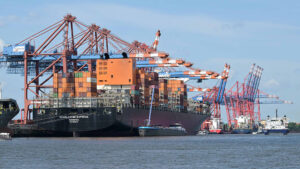The Global Economic Outlook: Navigating Through Uncertainty
As we delve into the economic forecasts shaping 2025, one key highlight stands out: the World Bank has recently adjusted its global growth projections, now estimating an expansion of just 2.3%, a decrease from a previous expectation of 2.7%. This pronounced slow-down signals the weakest growth rate since 2008, excluding periods of outright recession. At Extreme Investor Network, we believe understanding these shifts can provide valuable insights for both investors and policymakers alike.
The Trade Conundrum
What’s driving this downward revision? The primary culprit appears to be trade uncertainty. In recent years, international discord—especially surrounding trade practices—has disrupted the predictable policies that have been instrumental in reducing extreme poverty and fostering economic prosperity since World War II. Indermit Gill, the World Bank’s Chief Economist, succinctly captured this sentiment, highlighting that current trade tensions risk upending the economic stability we’ve enjoyed.
Regional Growth Projections: A Closer Look
The World Bank has also revised its forecasts for key regions, cutting the U.S. growth projection by 0.9 percentage points to 1.4% and reducing the Euro area’s expectations by 0.3 percentage points to 0.7%. Such adjustments reflect a broader trend impacting not just the developed world but also emerging economies.
However, there is a silver lining. The World Bank suggests that if major economies can reach lasting trade agreements—especially agreements that halve existing tariffs—we could see a potential uptick of about 0.2 percentage points in global growth over 2025 and 2026. Such outcomes highlight the intricate relationship between trade policy and economic performance.
The Ongoing Negotiations
Current negotiations between the U.S. and various trading partners are crucial. The recent meetings in London between the U.S. and China, aimed at temporarily reducing tariffs, exemplify the urgency and complexity of these discussions. With just weeks remaining before previously announced tariffs take effect, the stakes are incredibly high, not just for economic growth but for global trade relations.
Comparing Predictions
The World Bank’s reassessment aligns with findings from other economic organizations, such as the Organisation for Economic Co-operation and Development (OECD), which has also noted the impact of trade-related uncertainties on global growth. The OECD has projected a slowdown to 2.9% in 2025, down from a prior estimate of 3.1%. This growing consensus underscores the need for strategic action in trade policy.
The Path Ahead: A Call for Strategic Investing
As investors, understanding the factors influencing these economic forecasts is essential. The emphasis on trade dynamics refines our investment strategies. At Extreme Investor Network, we advocate for a proactive approach—monitoring trade negotiations closely, leveraging opportunities arising from potential agreements, and understanding how these shifts will impact various sectors.
Conclusion
The landscape ahead remains uncertain, yet it also presents opportunities for astute investors willing to analyze and adapt. Navigating these complexities requires vigilance and a commitment to informed decision-making. As we monitor the economic horizon, our dedication at Extreme Investor Network is to provide the insights you need to thrive in an ever-evolving marketplace. Stay tuned for more updates as we navigate these economic waters together!

